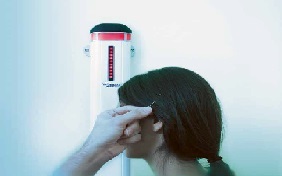by
Gus Iversen, Editor in Chief | September 15, 2015

A ferromagnetic detector
from Metrasens
From the September 2015 issue of HealthCare Business News magazine
When a young girl was injured during an MR exam earlier this year, Tobias Gilk, a member of the American Board of MR Safety, told reporters that more than 7,000 MR accidents take place in the U.S. every year, an increase of 500 percent since 2000. While those accidents represent a miniscule fraction of the estimated 30 million MR exams performed every year, they are still unacceptable — and there is plenty being done to change the tide. One aspect of an MR exam that makes it desirable is that it requires no radiation dose to the patient. Yet for something so safe, there is still plenty of danger to be mindful of when working with and around these enormously powerful magnets. The topic must be approached from a variety of perspectives, some clinical, others operational and physical.
Contrast agents and the radiologist-physician relationship
An estimated 30 percent of MR exams depend on the use of gadolinium-based contrast agents (GBCAs) to make the image easier to interpret, but recent publications have reported that deposits of GBCAs remain in the brains of some patients who undergo four or more contrast MR scans.
While the clinical implications of this are still unknown, it could have an impact on the degree of involvement radiologists have in choosing patient exams — which is currently suppressed by legislation designed to limit physician self-referral.
The Stark amendments and anti-kickback laws prohibit a physician from ordering an exam and billing CMS for it. Those regulations are designed to keep doctors honest, but it also means that decisions are made by referring physicians who may not be aware of all the finer points of the medical imaging exam being performed.
For Dr. Emanuel Kanal, director of MR services and professor of radiology and neuroradiology at the University of Pittsburgh Medical Center, the new findings illustrate a limitation to the otherwise useful legislation. “An order will simply state ‘MRI with contrast,’ but what dose? What rate? What route?” asks Kanal. The evidence increasingly suggests that these are important safety considerations that should be personalized to an individual patient’s needs.
Preventing errors while forgiving them
Making sure nobody gets close to the machine with items that will be magnetically drawn to it is at the core of MR safety. “We will literally tackle you at the door if you try to go in without following the proper protocols,” says Patricia Robberstad, MRI manager at Mount Sinai Roosevelt. “People don’t understand that a magnet is a magnet all the time — there’s no on and off switch — if you put a magnet on your refrigerator it doesn’t fall off at night when you turn the lights off.”
